
views
Adjusting Your Diet

Pack healthy snacks to munch on throughout the day. If you are constantly on the go, it can help to prepare some healthy snacks so you can reach for them easily and quickly. Having healthy snacks on hand means you will be less tempted to get fast food to go or opt for a prepackaged meal. Cut up fruit like apples, pears, and oranges the night before and pack them in plastic bags or Tupperware. Fruit makes a great, easy snack that is also good for you. Nuts like almonds and cashews are a great source of protein that won’t make you sleepy or drowsy throughout the day. Put a handful of almonds or cashews in a plastic bag and stash them in your purse or bag so they are easy to get to when you find yourself craving a snack. If you tend to crave something crunchy, go for homemade popcorn, tossed with sesame oil and sesame seeds, for a healthier alternative to potato chips.

Opt for the healthier option for lunch or dinner. Rather than overhaul your entire diet, focus on choosing the healthier option for at least one meal a day. Choose a salad and a smoothie over a burger and fries for lunch or go for a healthy stir fry with vegetables over steak and potatoes at dinner. Try to be consistent about going for a healthy option for at least one meal a day to reduce your calorie intake and stay health conscious.

Reduce your artificial sugar intake. Artificial sugars can be found in many prepackaged foods, such as baked goods, candy, sauces, and dips. Many artificial sweeteners for coffee and tea can also lead to health issues. If possible, substitute artificial sugar in your meals with natural sugars like maple syrup, honey, or agave nectar. These natural sweeteners contain minerals and nutrients that are good for you and can taste as good or better than artificial sugars. Rather than have a prepackaged cookie or candy, have a piece of dark chocolate. Dark chocolate contains antioxidants and contains less sugar than milk chocolate or other sweets.

Bake desserts with natural ingredients and sweeteners. Try to integrate natural sweeteners like honey, agave, and maple syrup into your baking. This will help you to avoid processed and artificial sugars and ensure your baked goods are healthy alternatives to store bought goods. There are many recipes that use natural sweeteners that you can try, including: Banana, coconut, and cashew cream tart, sweetened with maple syrup. Honey whole wheat banana nut loaf, sweetened with honey. An all-fruit popsicle, made with fresh fruit like watermelon, ice, and some honey for sweetness. Banana coconut dairy free ice cream, sweetened with agave. Double dark chocolate and ginger brownies, sweetened with crystallized ginger and dark chocolate.
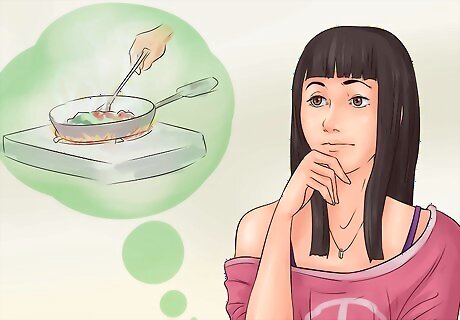
Cook at least one meal a day. To stay healthy in small ways throughout your week, set aside time to prepare one meal a day for yourself, whether it is breakfast, lunch, or dinner. Make yourself a simple breakfast of non-fat yogurt, granola, and fruit, or a quick lunch with a grain, a protein (like meat, fish, or tofu), and vegetables. Try not to skip any meals, as this can cause you to have low energy during the day. Look for recipes online or cookbooks that have recipes that take 30 minutes or less to prepare. Select one meal a day you are going to prepare and shop at the beginning of the week for the ingredients. This will ensure you have everything you need on hand and can make yourself a healthy meal quickly and easily.
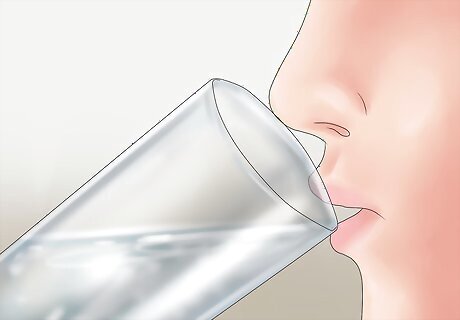
Drink water instead of soda. Cut down on your daily sugar intake by opting for lots of water, instead of soda or fruit juice. It can help to carry a full water bottle with you so you can sip water throughout the day.
Doing Exercise and Physical Activity
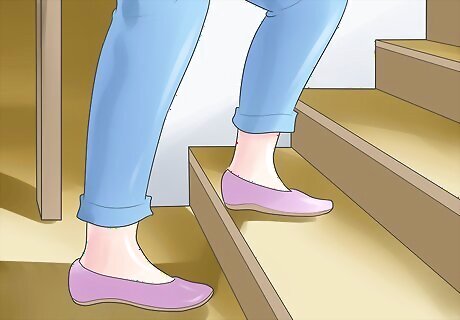
Take the stairs instead of the elevator. Skip the elevator ride in your apartment, office, or even at the mall and take the stairs instead. A brisk walk up and down a set of stairs will get your heart racing and act as a great cardio workout, especially if done on a daily basis.

Park further away from your office. If you don’t have time to schedule in a daily exercise routine, create one for yourself by parking further from your office in the morning. This will mean you have to take a walk to the office and start your day on a healthy note. If you take the bus to work, you can get off one stop earlier on your way to work and on your way home. This will force you to take a quick walk before and after work.
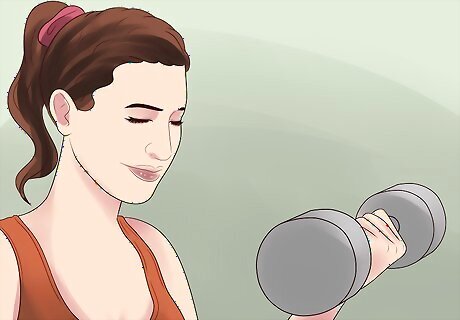
Try to do at least twenty minutes of exercise a day. If you have at least twenty minutes of open time in your schedule, try to fit in a quick exercise routine. Choose a time once a day where you can focus on working out and be consistent about that time. You do not need to join a gym or take a fitness class to do exercise. Instead, you can work out in your bedroom at home using online exercise videos or a set training plan. Doing twenty to thirty minutes of exercise a day can greatly improve your fitness level in a noticeable way. There are many online resources you can use to create a quick, daily workout to stay fit. You can also try interval training, which takes about 30 minutes and can lead to notable results in terms of fitness and health.

Join a sports team or a fitness team. Look for a recreational sports team in your area or start your own league. A sports team can give you the opportunity to socialize and get fit at the same time. Think about a sport or activity you enjoy and seek out a recreational team you can join. You may also want to consider joining a weekly fitness class, like yoga or pilates. Going to a fitness class one to two times a week is a small time commitment that could lead to high fitness results, as well as increase positive social interaction, foster lasting friendships and give mental health a fresh boost. Exercise helps release endorphins which act like a natural antidepressant. Often times, a mild case of the blues can be controlled with daily exercise.
Improving Your Well-Being
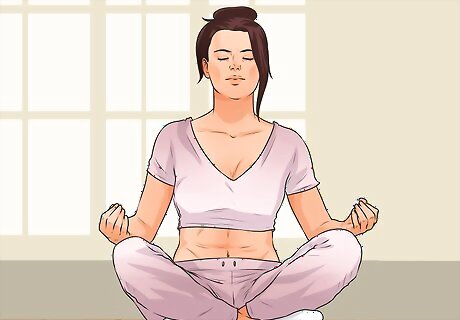
Start your day with meditation. To improve your overall well-being in just five to ten minutes, begin your day with meditation. Meditation has been scientifically shown to reduce your stress levels and help you feel calm and balanced. It has many emotional benefits, from stress management to deeper self-awareness and a reduction of negative emotions. It has also been shown to have medical benefits, especially if you suffer from anxiety disorders, high blood pressure, sleep issues or insomnia, and asthma. Meditation is also very effective for maintaining a general sense of well-being and physical health. There are several types of meditation, including: Guided meditation: This type of meditation is also known as guided imagery or visualization. A teacher or guide will describe images, smells, sounds, and textures that are relaxing and calming. You can find guided meditation guides online and can often access them through a smartphone or tablet so that you can do it anywhere. Mindful meditation: This type of meditation focuses on being mindful and aware of the present moment. You focus on what you experiencing during the meditation, such as the sounds around you or the flow of your breathing. In this type of meditation, you note your thoughts and emotions and you let them pass without judgement or comment. Transcendental meditation: This meditation technique involves silently repeating a personally assigned mantra in the form of a word, sounds, or phrase. The repetition of the mantra should help your body settle into a state of meditation, where you feel relaxed and calm. Qi gong: Qi gong (CHEE-gung) is a type of meditation found in traditional Chinese medicine. It combines meditation, relaxation, physical movements and breathing exercises. The focus is on restoring and maintaining mental and physical balance. You can find Qi gong meditation videos online or take a class in Qi gong.

Try deep breathing exercises. Doing five to ten minutes of deep breathing a day can help improve your brain function and your energy levels. Deep breathing is also known as Pranayama breathing. In Pranayama breathing, you control your breathing through breathing exercises to breathe more fully and deeply. When you do yoga, you are often encouraged to practice Pranayama, as the combination of yoga postures and deep breathing can lead to a meditative state. Start with the most basic Pranayama breathing exercise, where you breath in and out deeply through your nostrils using your diaphragm. Begin by sitting in a comfortable position in a quiet area with no distractions or noise. Place your hands on your diaphragm, right below your rib cage, and take a deep breath in through your nose. Try to inhale to the count of four. Hold the breath for one second and then slowly exhale the breath out of your nose to the count of four. Imagine you are trying to fog up a mirror in front of your nose as you breathe out. You should make a noticeable whooshing sound as you exhale. Repeat this breath cycle for ten to twenty breaths. Over time, you can extend the breath cycle for twenty to forty breaths.

Do one enjoyable activity a day. Improve your well-being by making time in your schedule to do one activity you enjoy a day. This could be something simple like reading a book or going for a walk. You could also do a specific hobby you enjoy, like crocheting, woodworking, or painting. Taking the time to do something you enjoy each day can help you to de-stress and slow down, especially if you have a busy schedule or a demanding career. To ensure you actually make time for an enjoyable activity, block off one hour or half an hour of your schedule for “you time”. This could be early in the morning when you first wake up or after you come home from school or work. Let family and partners know that you will be using this time to focus on your needs and to take some alone time doing what you enjoy.

Socialize with friends and family at least once a week. Even if you are not overly social or consider yourself an extrovert, maintaining social interaction with friends and family can contribute to a healthier state of being. This could be dinner every Sunday with your family or drinks every Friday night with your friends at the local pub. Make socializing part of your weekly routine and try to spend quality time with those closest to you. Socializing will also force you to turn outward, rather than inward, which can help you manage any stress or anxiety you may be feeling. Spending time with others can greatly improve a bad mood and allow you to release any tension from your day.
Reducing Bad Habits

Limit your alcohol consumption. Rather than cut out alcohol from your diet completely, you may want to regulate how much alcohol you consume every week. If you tend to binge drink, where you only drink a high amount of alcohol on certain days of the week, you may want to regulate your drinking by having one glass of water for every beer or drink you consume. This will ensure your body does not get dehydrated and you can control the effects of the alcohol. If you tend to drink a high amount of alcohol every night, or several nights a week, consider reducing your alcohol consumption to only the weekends or only one to two days a week. You may also try to cut back on how many drinks you have a night, for example, one glass of wine a night instead of two.
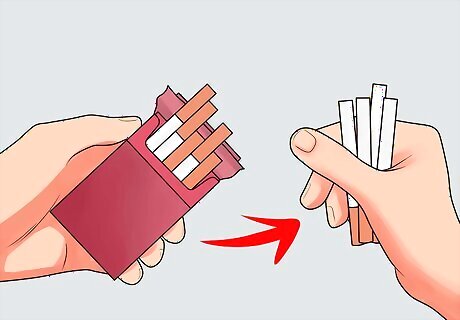
Quit smoking and cut back on drug use. If you want to get healthy, you need to quit smoking. You may start by reducing the number of cigarettes you have a day or investing in nicotine patches to help cut down on your smoking. You can also join a smoking support group to help you quit. As well, if you tend to use certain drugs or take prescription drugs regularly, you may want to consider cutting certain drugs out of your routine. Talk to your doctor about reducing your prescription drugs, especially if they are not considered necessary for your treatment.

Try to focus on positive, rather than negative, thinking. If you have a bad habit of thinking negatively about every situation or only considering the negative outcome, you may want to try to adjust your thinking to be more positive and proactive. Consider if you hang around any friends, co-workers, or family members that are a negative influence. They may complain often and only focus on the negative outcome of a situation, thereby encouraging you to also indulge in this way of thinking. Put distance between yourself and any negative individuals in your life, as negative thinking can lead to stress and anxiety. If you notice that you tend to approach situations with a glass half empty approach, try to come up with ways to turn negative situations into positive learning moments. This could mean pausing, taking a deep breath, and considering how to come up with a solution for the issue or problem, rather than simply complaining about the issue or problem. For example, you may have an issue with a co-worker who does not follow through on his work commitments and continues to let clients down. Rather than allow the co-worker’s attitude cause you to develop negative thoughts or reactions, talk to the co-worker directly. Ask him to consider other ways of approaching clients and following through on his commitments. If he does not listen to you or show any signs of adjusting his behavior, you may want to escalate the issue to a supervisor. This will allow you to be proactive about a source of negativity in your life, rather than allow the negativity to consume you.




















Comments
0 comment